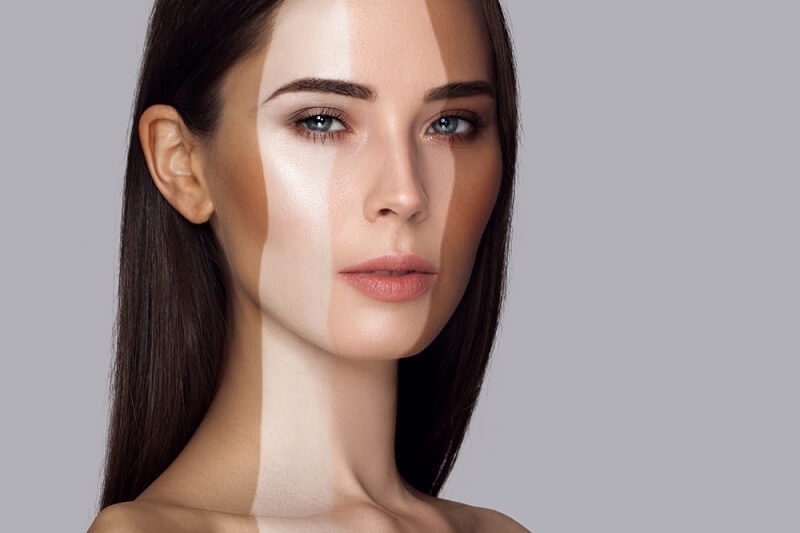
Finding the perfect foundation shade can be like solving a puzzle—too light and you look undead, too dark and complex for anyone to miss. And that's without even getting into undertones, lighting situations, and formula choices! It's not hard to see why so many makeup lovers find it hard to find their perfect match.
This guide will show you how to choose the right foundation shade for your skin tone—from analyzing undertones to putting the product through its paces—so you never have a mismatched base again! Whether you're buying online or at the store, you can purchase a foundation confidently, knowing your shade will be correct.
We'll discuss how to match foundation to your skin tone like a pro using simple base makeup tips and shade-choosing techniques for every skin tone and undertone!
Your foundation is, literally, the foundation of your entire makeup look. If you choose the wrong foundation shade, it can destroy even the most flawless application of makeup. When you select the correct foundation, it:
A good foundation match should disappear into the skin and not sit on the skin like a mask.
The undertone is the undertones beneath the top layer of your skin. Your skin tone may change with sun exposure, whereas your undertone remains the same. With this knowledge, you can make a better choice when finding a foundation that works best for your natural color.
1. Vein Test:
2. Jewelry Test:
3. Sun Test:
When you figure out your undertone, you will be better prepared to choose foundation shades that will not make you look ashy, orange, or gray.
Your skin tone is the surface color of your skin and generally falls into these categories:
You should know that tone and undertone are essential when choosing a foundation. Together, they guide you to your proper match.

Foundation shades often include hints in their labeling system. Here’s what to look for:
Each brand may have its naming system, so always check the shade description online or on packaging.
Your face and body may be different colors, especially if you wear sunscreen or makeup regularly.
Apply foundation to your jawline or the side of your cheek—this area blends your face and neck, ensuring a seamless match.
The shade that disappears into your skin is your match.
Foundation formulas vary, and choosing the right one for your skin type ensures comfort and performance.
Don’t choose a foundation based on what’s popular on social media. Focus on matching the foundation to your skin, not what looks good on someone else. Especially when considering foundation for Indian skin tones or other melanin-rich complexions, be sure the formula offers enough shade depth and undertone variety.
Many Indian skin tones fall into the medium to deep range with warm or neutral undertones. Look for honey, caramel, tan, almond, or toffee shades.
Your desired makeup look should also influence your foundation choice.
Knowing how to choose a foundation shade is only half the journey—application matters too. Here’s how to get a natural, flawless look:
You might love your foundation indoors but hate it in daylight. Please always step into natural light before you make a purchase. Store lighting, especially fluorescent lighting, can distort color perception.
Pro Tip: After testing a foundation, take a short walk outside or take a selfie in natural light to evaluate the match properly.
Not everyone needs a luxury brand to find a good match. Some of the best drugstore foundations offer inclusive shade ranges and excellent performance.
Look for:
Bonus Tip: Many drugstores now offer shade-matching kiosks or allow returns even on opened beauty products.
Learning to select the right foundation shade for your skin's coloring is something that anyone can learn to do. If you can be patient and are mindful of your skin's color, tone, type, and undertone, you will be ready to find your perfect foundation.
Things to consider: Always test foundation colors in natural light. Always match the jawline to your neck. Be aware of and understand your undertones. Choose the finish and the formula of the foundation for your skin type. Don't be afraid to mix foundation colors if you have to.
Armed with the correct information and tools, you won't have to settle for "this is close enough." You will find a base that perfectly celebrates you and your skin.
This content was created by AI